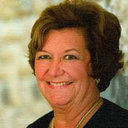Treatment of chronic pain by deep brain stimulation: long term follow-up and review of the literature.
Ключови думи
Резюме
Since the senior author's (J.E.A.) first report in 1972 of the use of deep brain stimulation (DBS) to control chronic pain, electrodes for DBS have been implanted in 141 patients. Of reported series, this one has the largest number of patients and the longest period of follow-up. The mean age of patients in this study was 51.2 years. The mean length of follow-up was 80 months. Patients had experienced pain for a mean period of 65 months before DBS was attempted; all patients had exhausted other medical and surgical therapies. For the purposes of this study, pain states were characterized as being either nociceptive or deafferentation in nature. Nociceptive pain was treated primarily by stimulation of the periaqueductal or periventricular gray, and deafferentation pain was treated primarily by stimulation of the sensory thalamus. Eighty-four patients were treated for deafferentation pain, which included the thalamic pain syndrome (25 cases), peripheral neuropathic pain (16 cases), anesthesia dolorosa (12 cases), paraplegia pain (11 cases), postcordotomy dyesthesia (5 cases), phantom limb pain (5 cases), thoracic neuralgia (4 cases), and miscellaneous pain states (6 cases). We treated 57 patients with nociceptive pain states, 51 for low back and skeletal pain and 6 for pain from the invasion of cancer. Initial relief of pain was obtained by 83 patients (59%). After the mean follow-up period of 80 months, 42 patients (31%) continued to obtain significant pain relief with DBS. Some pain states, particularly anesthesia dolorosa and paraplegia pain, did not seem to respond to DBS. Major complications of therapy included wound infection (12%) and intracranial hemorrhage (3.5%); there was one death in the series (0.7%).(ABSTRACT TRUNCATED AT 250 WORDS)


